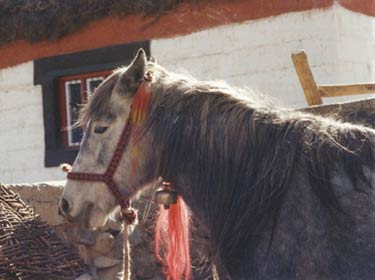Type the name of the breed you're looking for below
[wpdreams_ajaxsearchlite] Don't see the breed your're looking for? Click here and let us know!
Chamurti pony
| Country Of Origin | India |
| History and Background | The Chamurthi is a small mountain pony of the Indian Himalayas, regarded as a distinctive breed. The Chamurthi belong to two main areas in the Indian Himalayas. The pin valley, with its several villages, to the southwest and the villages of Kibber and Chichem, to the northeast of the town of Kaja(Kaza)that lies along the Spiti River in the District of Lahaul-Spiti,Himachal Pradesh. Although primarily inhabiting upland plateau of 5,000 meters or more, it is also bred and used as low as 800 meters. It is well adapted to the temperatures extremes of the ‘cold desert’ regions of Spiti and northwards in Ladakh where temperature range from -30 degrees C.to +30 degrees C. The Chamurthi is one of four recognized indigenous horse breeds in India. It is thought they originally came from Tibet, which is likely as the Tibetans have a very similar type of pony. This area has traded with Tibet for centuries and horses were obviously a main form of transportation as well as highly prized possessions. They are still taken to local fairs every year, as they are well known as excellent riding ponies. |
| Use Today | Pack horse, Agricultural and draft work |
| Height | 11.2 and 12.2 hands (46 and 50 inches, 117 and 127 cm) |
| Colour | Any colours and patterns |
| Characteristics | The Chamurthi has a good bone structure and is well muscled. Its chest is deep and the shoulders are slightly sloped. The withers are low and the back is short, but it tends to have a high, almost straight, backbone, rather than one that slopes gently down from the withers and up again to the rump. Its legs are short and sturdy. Its displays a range of head features tending to the heavy side, with small to medium eyes and ears. Its distinguish features are:- •a series of small strips along the spine, an ancestral mark of the extinct Central Asian Wild horse (the “Przewalski” horse): •a series of small white patches along the spine, which incorrectly may be thought old saddle-sore marks: •a slightly concave face on some indicating probable Arabian influence . Perhaps its most distinguish feature, and the source of its value to riders, is that it is one of the worlds few natural “pacers” a five-gaited horse, that trots on its laterals rather than diagonals enabling the rider to sit comfortably without posting while the horse trots on for two or three hours at a time. |
| Personality and Temperament | They are easy keepers, having originated in an area with little vegetation. They are hardy, strong, willing and capable. |



